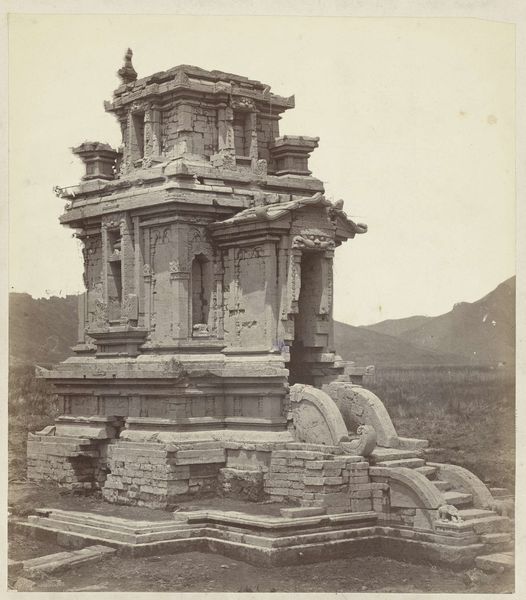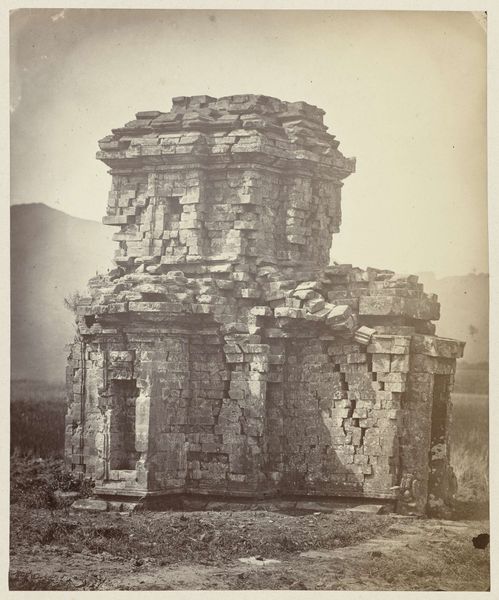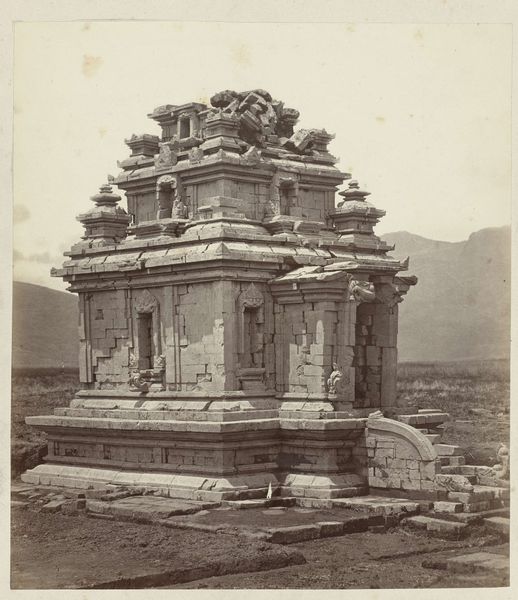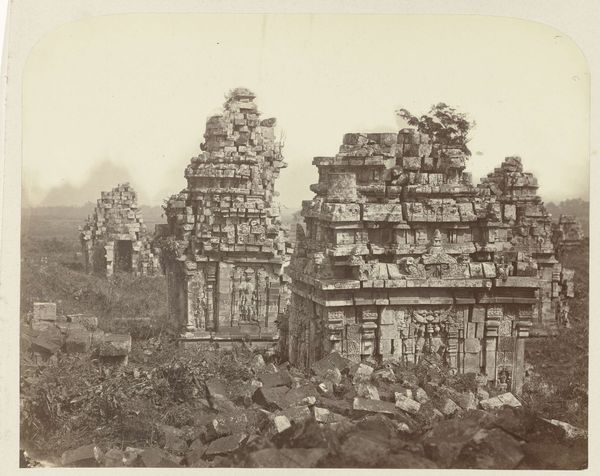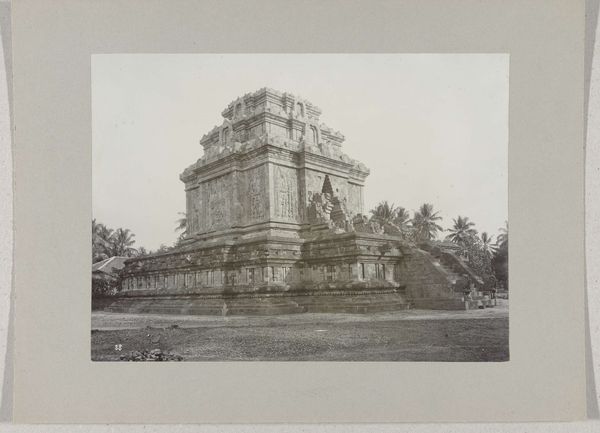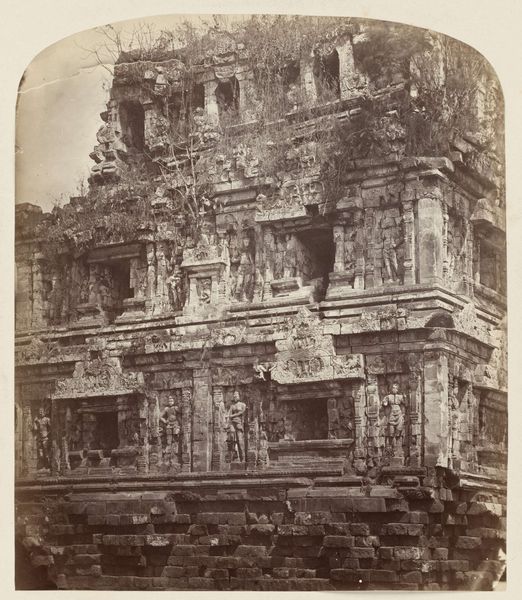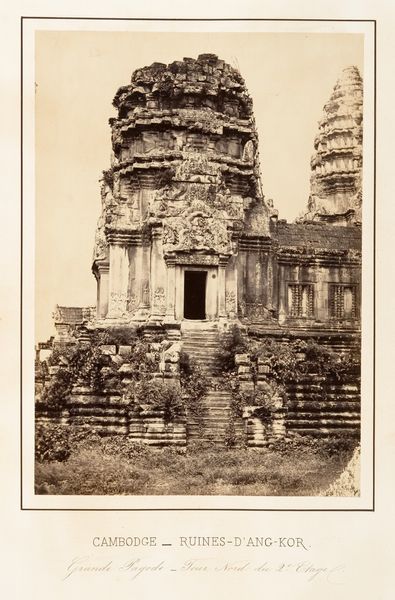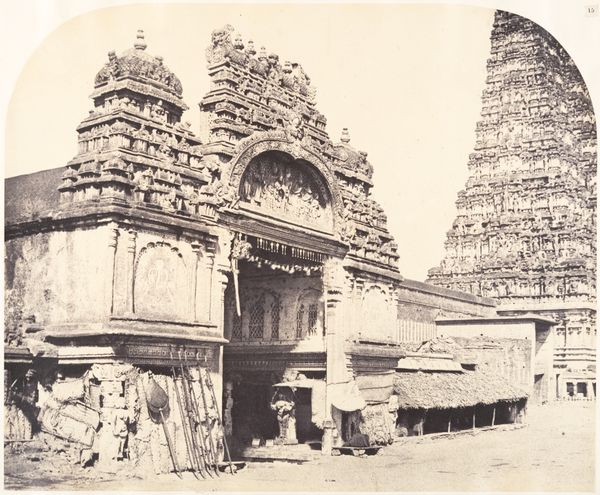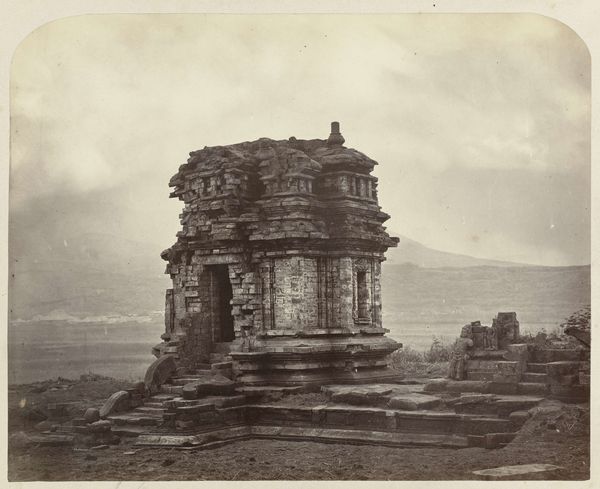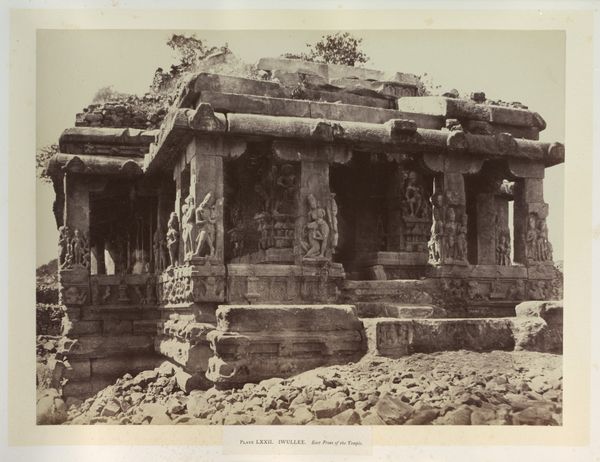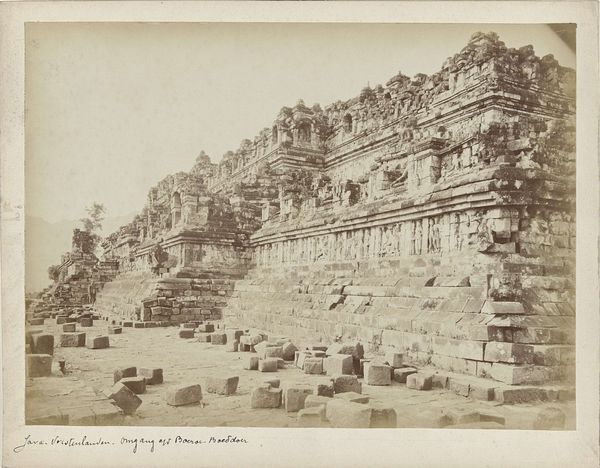
Candi Bhima, general view including its superstructure with sculpted heads and entrance. Dieng plateau, Wonosobo district, Central Java province, 9th century Possibly 1864 - 1867
0:00
0:00
print, photography, architecture
# print
#
asian-art
#
landscape
#
photography
#
historical photography
#
ancient-mediterranean
#
19th century
#
architecture
#
statue
Dimensions: height 260 mm, width 210 mm
Copyright: Rijks Museum: Open Domain
Editor: So, here we have a 19th-century print, most likely a photograph, by Isidore Kinsbergen. It captures a general view of Candi Bhima, a 9th-century structure in Central Java. I find the solidity and scale of the temple pretty impressive. What can you tell me about this work? Curator: Well, seeing this image through a historical lens, the architecture itself reflects the socio-political influences of the time it was constructed. Consider the Dieng Plateau. Its sacred status influenced the placement and design of structures like the Candi Bhima, and you see that reflected even in this image from a much later period. Editor: The photographer chose this angle for a reason, right? Was it for documentation, or was something else going on? Curator: Precisely. Photography like this served multiple roles. It documented ancient sites, aiding scholarly research and preservation efforts during the colonial period. But also, consider the public image crafted and disseminated through these photos. Did these images promote a particular narrative, perhaps one emphasizing Dutch authority and control over Indonesian cultural heritage? What details stand out that were deliberately framed by the photographer? Editor: That’s a great point about the potential for constructed narratives. I hadn't thought about the framing from that perspective. Seeing the temple itself feels detached from that whole political layer. Curator: And isn’t that detachment, that decontextualization, also part of the photograph’s power? We receive this image filtered through layers of history and agenda. It prompts us to question our role in its reception, our own gaze on cultural artifacts. Editor: I’m struck by how a seemingly straightforward image can open up so many questions about history and power. Thank you. Curator: My pleasure. Thinking about images critically, within their historical moment and influence, always enriches our understanding.
Comments
No comments
Be the first to comment and join the conversation on the ultimate creative platform.

